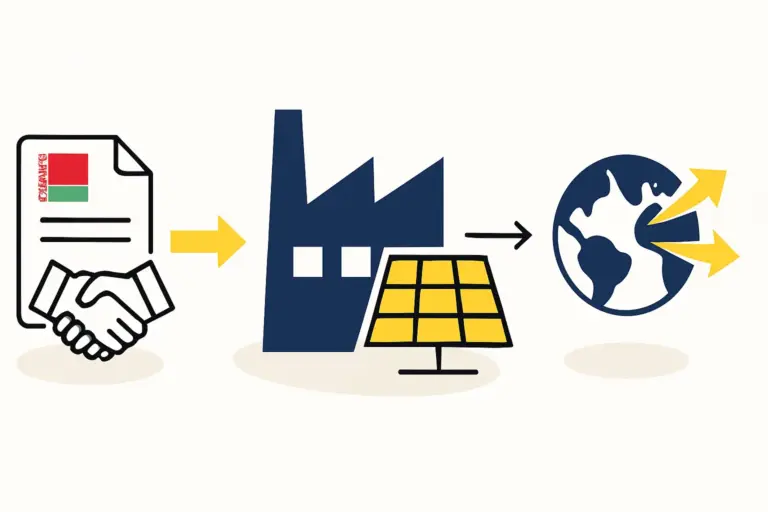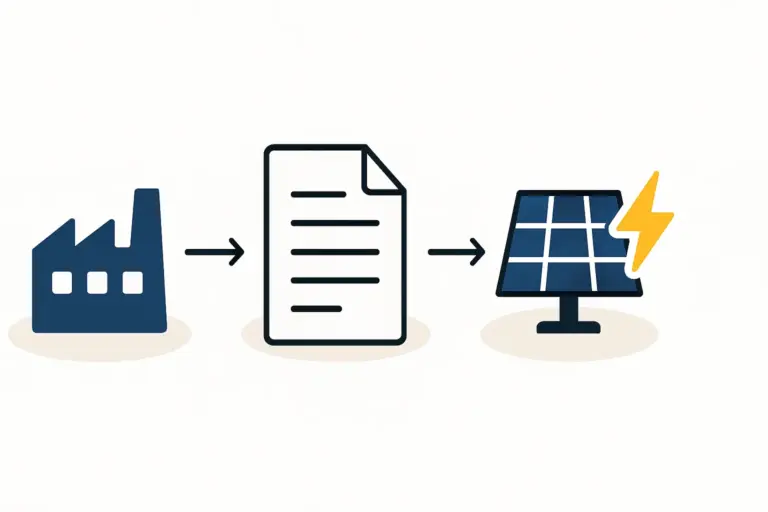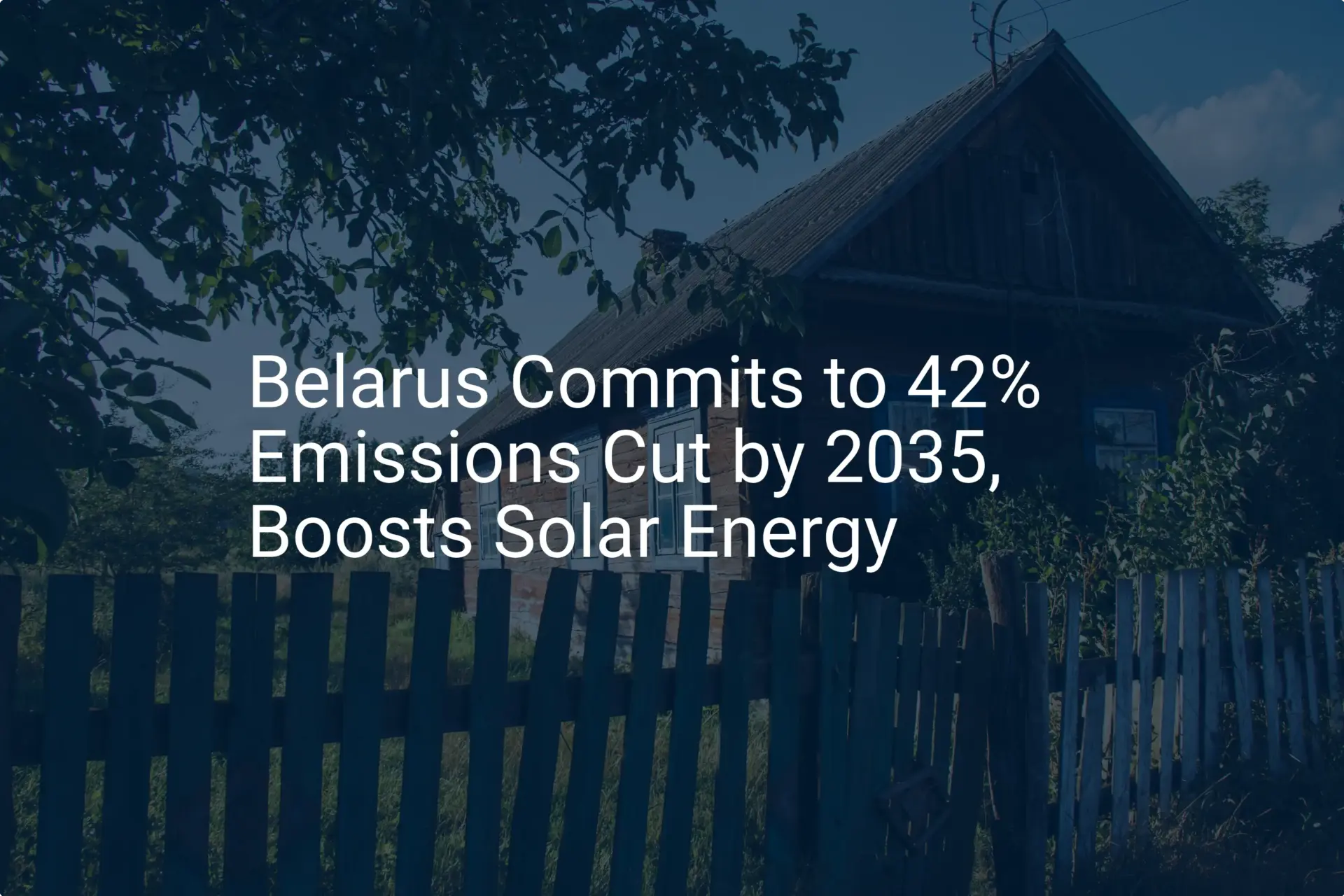An entrepreneur planning to establish a solar manufacturing facility often focuses on the core business: the production line, the supply chain, and the market for finished modules. The task of connecting to the national electricity grid can seem like a secondary, procedural detail.
However, in a structured economy like Belarus, securing a grid connection is a foundational project in its own right—one that demands early attention, significant investment, and a clear understanding of a state-managed process.
Failing to account for the specific requirements and timelines of the Belarusian energy system can lead to substantial delays and unforeseen costs, impacting the entire business plan. This guide outlines the formal procedure for connecting an industrial facility to the grid, providing the clarity needed to integrate this critical step into your project planning from day one.
Table of Contents
The Central Role of the State in Belarus’s Energy Sector
Unlike in many liberalized markets, the energy sector in Belarus is vertically integrated and state-controlled. The dominant entity is the state production association, Belenergo, which, along with its regional subsidiaries (such as Minskenergo, Gomelenergo, etc.), manages virtually all aspects of electricity generation, transmission, and distribution.
For a new industrial user, this means connecting to the grid is not a simple commercial negotiation with multiple providers. Instead, it is a formal administrative process governed by specific legislation, primarily:
- Presidential Decree No. 2 (January 14, 2022): This decree streamlines certain administrative procedures for connecting to electricity and heat supply networks.
- Council of Ministers Resolution No. 122 (February 17, 2012): This resolution details the regulations for organizing electricity supply and usage.
Understanding this context is crucial: every step is regulated, documented, and must follow a prescribed path.
The Step-by-Step Grid Connection Process
The process of connecting a new factory to the grid is managed through a “single window” principle, with the local energy supply organization (a subsidiary of Belenergo) serving as the primary point of contact. While this simplifies communication, the underlying procedure remains complex and multi-stage.
Step 1: Application and Issuance of Technical Specifications (ТУ)
The process begins with a formal application submitted to the local energy supply organization. The applicant must provide basic information about the planned facility, including its location, intended power consumption, and legal documentation confirming land use rights.
Based on this application, the energy organization prepares and issues Technical Specifications (Технические условия or ТУ). These are arguably the most important documents in the entire process. They serve as the technical rulebook for your connection, detailing:
- The connection point to the existing grid.
- The required voltage level.
- Requirements for relay protection and automation.
- Specifications for the electricity metering equipment.
- The division of ownership and operational responsibility for the new electrical infrastructure.
By law, the Technical Specifications must be issued to the applicant free of charge within 15 calendar days from the date of application. These specifications are valid for two to five years, providing a window to complete the subsequent steps.

Step 2: Design and Project Documentation
With the Technical Specifications in hand, the next phase is to develop the detailed project design for the external power supply. This is the financial responsibility of the investor.
The investor must engage a licensed design organization to create the complete set of blueprints and documentation in strict accordance with the issued ТУ. This design will cover everything from the substation on the factory’s premises to the power lines connecting it to the grid point defined by the energy organization.
This documentation must then be formally approved. Understanding the full scope of these investment requirements is fundamental to creating a viable financial model for the project.

Step 3: Construction of Electrical Installations
Once the design is approved, the physical construction of the required electrical infrastructure begins. This includes building substations, laying cables, and erecting power line supports.
A critical point for any investor to understand is that, in most cases, the energy supply organization itself (or its designated contractor) will perform these construction works. The investor, however, is responsible for financing the full cost of this construction. These costs are determined based on the approved project design and formalized in a separate contract between the investor and the energy organization.
Step 4: Inspection and Commissioning
After construction is complete, the new electrical installations must be inspected and approved before they can be energized. This involves several key actions:
- Technical Inspection: The state energy supervision authority, Gosenergonadzor, conducts a thorough inspection to ensure the installation complies with all technical regulations and the project design.
- Testing and Commissioning: The equipment is tested to confirm it operates safely and correctly.
- Act of Admission: Upon successful inspection, Gosenergonadzor issues an “act of admission for operation,” which formally permits the installation to be used.
This stage ensures that the entire facility, from the grid connection to the internal wiring, is safe and ready for operation. It is the final technical hurdle before the factory can be powered. Building a turnkey solar factory involves integrating this external grid connection process seamlessly with the internal readiness of the production lines.

Step 5: Concluding the Electricity Supply Agreement
With the technical approvals secured, the final step is administrative. The investor enters into a formal electricity supply agreement with the local energy supply organization. This contract legally establishes the relationship, outlines tariffs, and sets the terms for the ongoing supply of electricity to the factory.
Only after this agreement is signed can the new connection be energized, allowing the solar factory to begin operations.
Key Considerations for Investors
Navigating this process successfully requires awareness of several business-critical factors:
- Timelines: The entire procedure, from the initial application to the final energizing of the facility, can take considerable time. Based on experience from similar industrial projects in Belarus, investors should budget for a timeline of 1.5 to 2 years. This must be factored into the overall project schedule.
- Cost Responsibility: Crucially, the investor bears the full financial burden for both the design and the construction of the grid connection infrastructure. These costs are in addition to the investment in the factory itself and can be substantial.
- Regulatory Adherence: Because the process is highly formalized, any deviation from the Technical Specifications or procedural missteps can lead to significant delays. Meticulous documentation and adherence to regulations are not optional.
Frequently Asked Questions (FAQ)
Q: What is Belenergo?
A: Belenergo is the state-owned production association that controls the generation, transmission, and distribution of electricity throughout Belarus. Any new industrial facility must connect to the grid managed by one of its regional subsidiaries.
Q: What are “Technical Specifications” (ТУ)?
A: Technical Specifications, or ТУ, are a set of technical requirements issued by the energy organization. They define exactly how a new facility must be connected to the grid, including voltage, equipment standards, and the physical connection point. They are the foundation for all subsequent design and construction work.
Q: Who pays for the grid connection infrastructure?
A: The investor or business owner is responsible for financing the full cost of connecting their facility to the grid. This includes the cost of creating the project design and the physical construction of power lines, substations, and other necessary equipment.
Q: How long does the entire grid connection process take?
A: While some administrative steps have defined short timelines (e.g., 15 days for issuing ТУ), the entire end-to-end process is a lengthy one. Investors should realistically plan for a duration of 18 to 24 months from the initial application to having a fully operational power supply.
Q: Can I use my own contractor to build the power lines?
A: Generally, the construction work for the external grid connection is performed by the energy supply organization or a contractor approved by them. The process is tightly controlled to ensure compliance with national standards and compatibility with the existing grid.
Planning for Success
Connecting a new solar factory to the Belarusian grid is a marathon, not a sprint. It is a regulated, multi-year process and a critical part of the overall project’s foundation.
By understanding these steps, timelines, and financial responsibilities early, an entrepreneur can build a more realistic business plan, avoid costly surprises, and set their new venture up for a smooth and successful start. A comprehensive approach to factory planning, such as the one found in the structured e-courses at pvknowhow.com, ensures these critical external dependencies are not overlooked. Proper preparation transforms this complex administrative hurdle into a predictable and manageable part of the investment journey.






